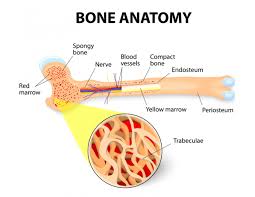- You are here:
- Home »
- Blog »
- Uncategorized »
- Multiple Myeloma Prevention
Multiple Myeloma Prevention

Consider evidence-based, non-toxic, non-conventional therapies for multiple myeloma prevention
Multiple Myeloma prevention, or reducing your risk of full MM once you have been diagnosed with pre-MM (SBP, MGUS or SMM) is based on evidence-based nutrition, supplementation and lifestyle therapies.
Enhancing your bone health is job #1 for Multiple Myeloma Prevention
Osteoporosis and osteopenia in MGUS, SMM patient is common. As we age (I just turned 60), our testosterone levels decrease, our metabolism slows and we slow. The net effect of aging is that our bone mineral density (BMD) decreases. When our BMD decreases, our risk of fracture increases.
Increased risk of bone damage aka fractures is associated with pre-MM- both MGUS (monoclonal gammopathy of undetermined significance) as well as SMM (smoldering multiple myeloma).
Managing my bone health, my bone mineral density leads to multiple myeloma prevention.
My mom fell and broke her hip last year. Within a few months, the hip break led to losing her driver’s lisence, a move to assisted living, and… let’s just say that mom is getting old, fast. You don’t want to risk this. Believe me.
A challenge, at least for me, is that-
- I don’t consider myself to be old and
- I have always thought of osteoporosis/osteopenia as being a problem for older women.
According to the research below, I am incorrect.
The good news is that increasing bone mineral density is relatively inexpensive and relatively easy. Multiple myeloma prevention requires strong bones.
I say “relatively” only because we men must focus on our BMD to make a difference and we must make several lifestyle changes to restore our BMD.
Let me be specific. According to the studies linked below, we must take 3 basic steps to increase our BMD.
- Frequent but moderate exercise-
- Consume a “prudent/healthy” diet-
- Nutritional supplementation-
Want to know the kicker? These basic steps not only enhance multiple myeloma prevention but will reduce your risk of a host of chronic diseases including many types of cancer.
While my cancer diagnosis in early ’94 was certainly a wake-up call for me regarding my lifestyle, it was my mom’s fall and subsequent bone break that got me to focus on bone mineral density.
- I exercise a bit daily at my local LifeTime Fitness-
- I focus on bone building foods-
- I take magnesium, vitamin D3 daily-
If you are a fifty plus year old man, do yourself a favor. Take a few simple steps to make your bones stronger. You will be glad you did.
Scroll down the page to ask me a question. Thanks.
David Emerson
- MM Survivor
- MM Cancer Coach
- Director PeopleBeatingCancer
Recommended Reading:
- Multiple Myeloma Therapy, Magnesium, Bone Mineral Density
- Healing Bone Loss in the Multiple Myeloma Survivor
- Multiple Myeloma Therapy- Bisphosponate Risks- Zometa, Aredia, etc.
- Multiple Myeloma Bone Lesions- Decreased BMD = Mortality
Bone disease in multiple myeloma and precursor disease: novel diagnostic approaches and implications on clinical management
“Recent studies demonstrate that patients with the precursor conditions smoldering MM (SMM) and monoclonal gammopathy of undetermined significance (MGUS) show evidence of bone disease and increased risk of fractures.
The understanding of the pathogenesis of bone disease in MM has expanded in recent years. The traditional skeletal survey will probably be replaced by newer and more sensitive imaging techniques, which may have a prognostic impact and change our definition of MGUS and SMM. Bisphosphonates are recommended to prevent skeletal events in patients with MM, and have also been studied in SMM and MGUS. This article summarizes the current knowledge of bone disease in plasma cell disorders, and discusses the current standard and future role of novel imaging techniques, as well as the evidence and current guidelines for bisphosphonates in MM, SMM and MGUS…”
The Effectiveness of Physical Exercise on Bone Density in Osteoporotic Patients
“Physical exercise is considered an effective means to stimulate bone osteogenesis in osteoporotic patients…
Two types emerged:
(1) weight-bearing aerobic exercises, i.e., walking, stair climbing, jogging, and Tai Chi. Walking alone did not appear to improve bone mass; however it is able to limit its progressive loss. In fact, in order for the weight-bearing exercises to be effective, they must reach the mechanical intensity useful to determine an important ground reaction force.
(2) Strength and resistance exercises: these are carried out with loading (lifting weights) or without (swimming, cycling)..”
Dietary Patterns, Bone Mineral Density, and Risk of Fractures: A Systematic Review and Meta-Analysis
“Discussion
To our knowledge, this is the first systematic review and meta-analysis of dietary patterns, BMD, and risk of fracture based on “a posteriori” derived dietary patterns. Our meta-analysis suggests that a “Prudent/Healthy” dietary pattern may decrease the risk of low BMD among children and adolescents, young adults, and older adults.
Further, our results indicate that a “Western/Unhealthy” dietary pattern may increase the risk of low BMD in adults older than 50 years. Among older men, the pooled results of the cohort studies showed a significant association between “Prudent/Healthy” dietary patterns and a reduced risk of fracture, while “Western/Unhealthy” patterns were related to a higher risk of fracture…”
Vitamin D for Osteoporosis
“But it’s hard to get the amount you need from food alone. Experts recommend 600 international units (IU) of vitamin D per day for adults up to age 70, and 800 IU for people 71 and older. If you’re not getting enough from sunlight and food, you may need to take a supplement…
Magnesium intake, bone mineral density, and fractures: results from the Women’s Health Initiative Observational Study1,2,3,4
“Conclusions: Lower magnesium intake is associated with lower BMD of the hip and whole body, but this result does not translate into increased risk of fractures. A magnesium consumption slightly greater than the Recommended Dietary Allowance is associated with increased lower-arm and wrist fractures that are possibly related to more physical activity and falls. This trial was registered at clinicaltrials.gov as NCT00000611…”
Men’s Bone Health Is Largely Ignored
“A third of all hip fractures happen in men, and in the year after a fracture, men are twice as likely to die as women. That’s due, in part, to the fact that men don’t get treated as often as women do for osteoporosis, a new reportfrom the International Osteoporosis Foundation says…
In fact, men’s bone health is largely ignored, and one study showed that men are half as likely as women to get treatment. About 20% of men over 50 have osteoporosis fractures, a number set to rise with the aging population, the report says. From 2010-2030, the number of hip fractures in American men is set to rise 52%, while the number among women is expected to drop by nearly 4% (likely because women are routinely screened for bone loss and are treated preventively)…
Osteoporosis ‘largely ignored’ in older men
“Less than 3% of older men who had experienced an osteoporosis-related fracture had been properly diagnosed and treated, according to findings presented at ACR Convergence 2020.”Osteoporosis is a debilitating disease and it carries with it significant morbidity and mortality…”
Osteoporosis Diagnosis in Men: The T-score Controversy Revisited
It is well known that the consequence of osteoporosis is fragility fracture.1 These fractures increase with advancing age.2 As they are more common in women, osteoporosis is often considered to be a disease of older women. However, the lifetime fracture risk for men age over the age of 50 is up to 30% and approximately 30–40% of all osteoporosis-related fractures occur in men.3, 4
An insight into the paradigms of osteoporosis: From genetics to biomechanics
“Considered as one of the major epidemics of the 21st century, osteoporosis affects approximately 200 million people globally, with significant worldwide impact on rates of morbidity and mortality and massive socioeconomic burdens.
Mainly characterized by decreased bone mineral density (BMD) and increased risk of bone fragility/deterioration, this devastating silent epidemic typically has no symptoms until a fracture occurs. The multifactorial disease, osteoporosis is instigated by complex interactions between genetic, metabolic and environmental factors, with severe impact on the biomechanics of the musculoskeletal system…
The key to successful prevention and treatment of osteoporosis is the identification of patients at risk for developing the disease as well as early-stage victims. Considering the multifactorial nature of osteoporosis, as presented here in this review, a holistic investigation that examines the various underlying factors of this complex disease including genetic, biological and biomechanical should be incorporated into effective risk assessment rubrics and tools. Such integrative investigations would be of great value to both clinical and research communities, alike, by shedding more light of the etiology of the disease towards more effective preventive and treatment modalities…”


